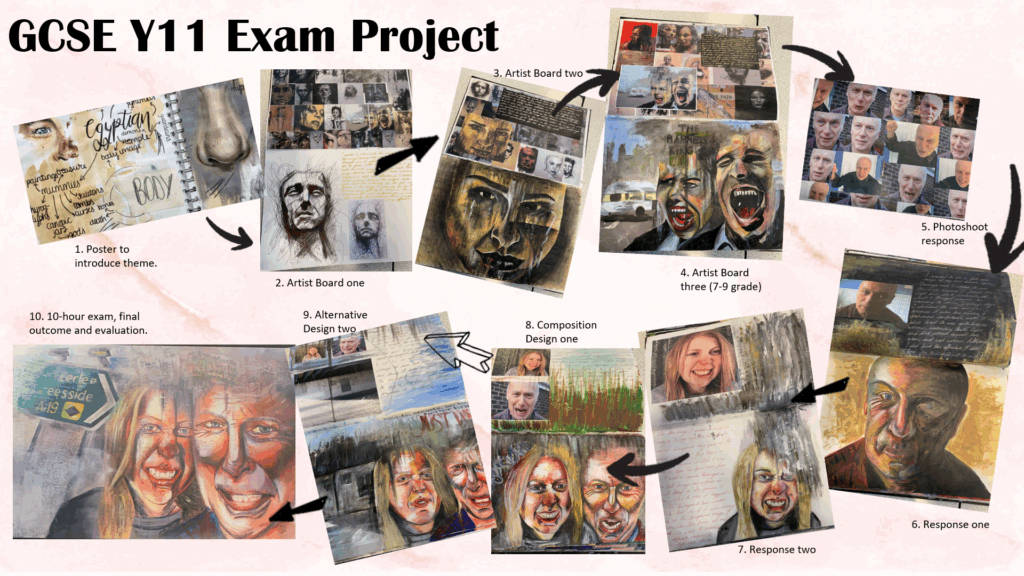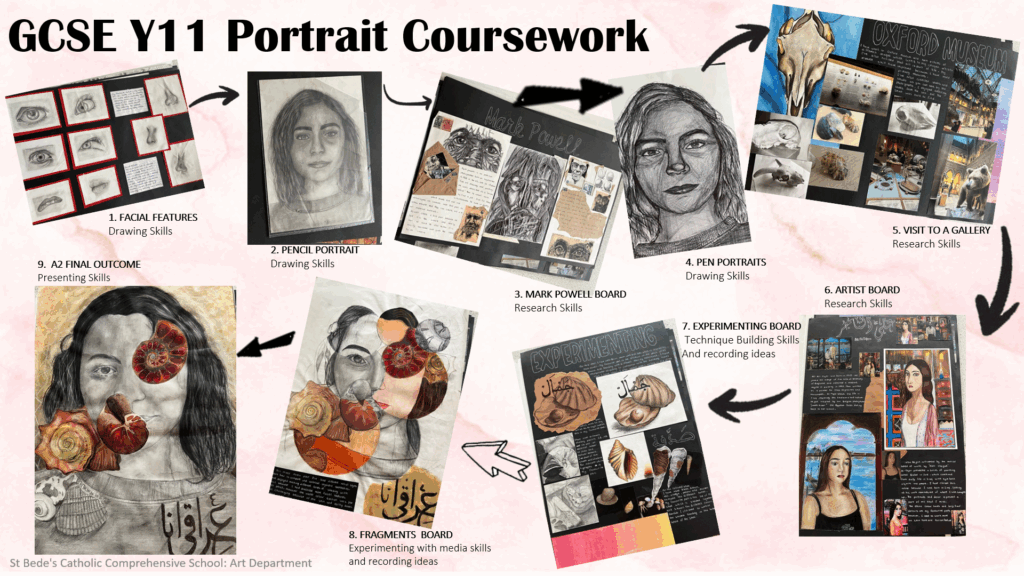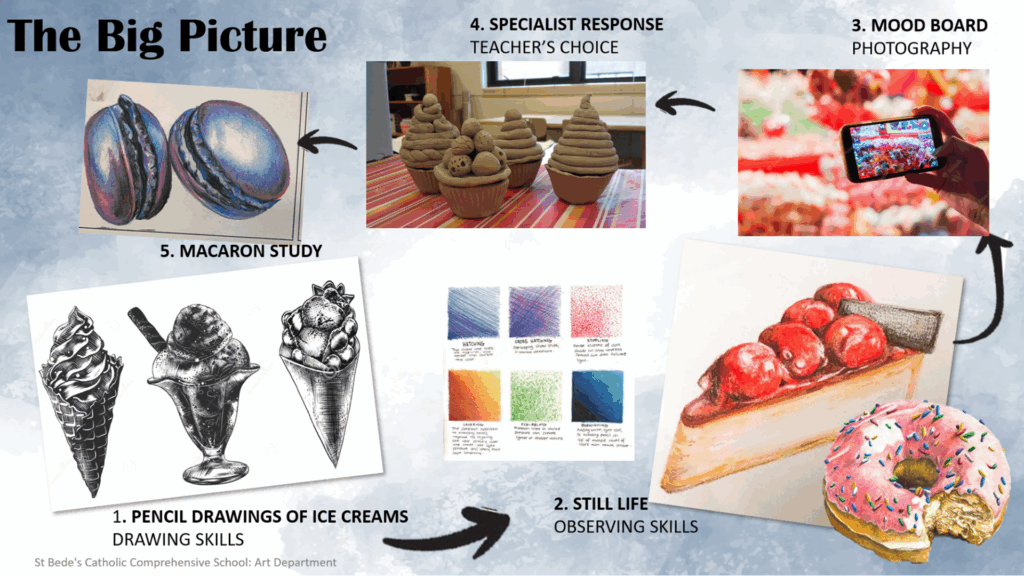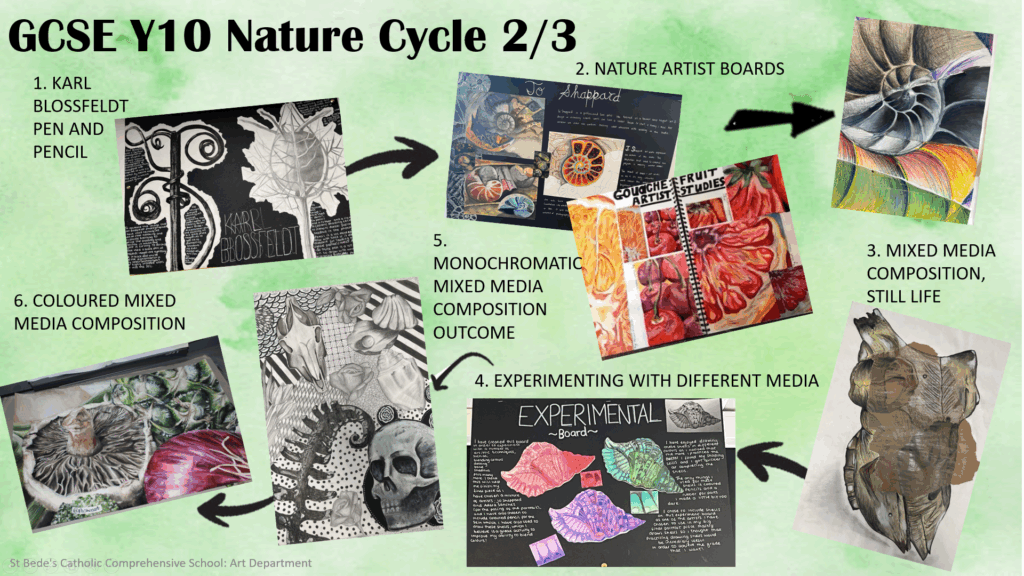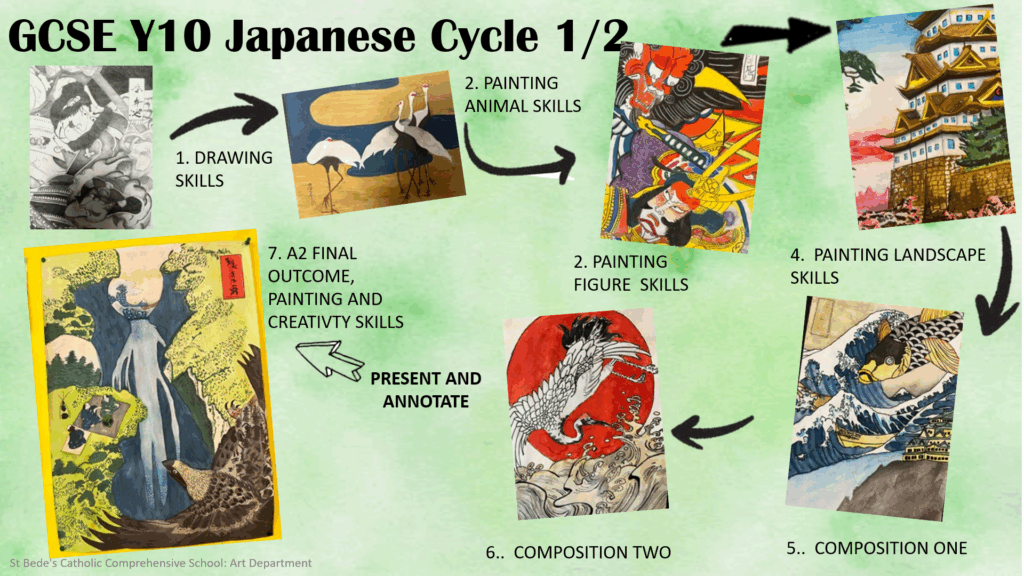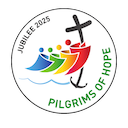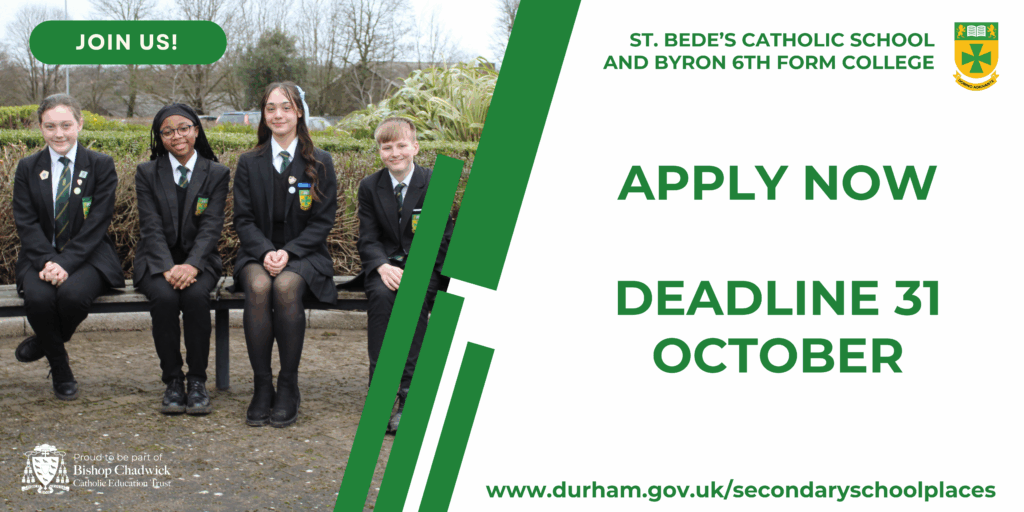In this section of the website, you will find information about the Intent, Implementation and Impact to teaching Art at St Bede’s Catholic School. View our course information below:
Key Stage 4AQA | Art and Design | GCSE | Art and Design AQA | Art and Design | AS and A-level | Art and Design Year 7 Projects Fruit Mixed Media Drawing: These outcomes of each project address a wide range of skills involving an introduction to mark making, using flat colour tones and consistent pattern control. Year 7 gives a taster to some of the formal elements in art. Nature versus Man-made Mixed Media Drawing: Figure Sculpture: Celtic Merchandise: Students become ambitious with contrasting and comparing shapes. Mark making is purposeful with tone and shadow and patterns are used with creative typography designs. Envelope illustration: Natural Form Mixed Media Artwork: Students mimic the course of a GCSE project by establishing the key assessment objectives. Pupils develop ideas, explore a range of media, refine artwork, and present their work creatively. These are skills that involve a challenge balancing all the drawing, painting and annotating skills from previous years. -Japanese Edo Art Paintings of Figures, Animals and Landscapes -Natural Forms GCSE Artwork All pupils explore different approaches to Japanese Art. They develop skills and knowledge of Japanese design and research how their art style has developed from the East and West. Students produce a series of paintings influenced by Japanese Edo Kite designs. This challenged their KS4 knowledge and students then develop their observational drawing skills from secondary and primary sources. Students explore media and materials whilst learning about colour, texture, composition, and scale. -Portrait Project -Self Directed Brief Throughout history artists have been intrigued by the human form and have attempted to capture images and likenesses of their subjects and themselves. In this project, pupils expect to study a famous artists known for their portraits and try to imitate their style. All students produce their own self portrait in their chosen artist’s style. Followed by a project set by the exam board AQA. Students construct a portfolio based on a chosen theme from the exam paper. Students explore their own chosen artists and produce an outcome based on their project research in a 10-hour exam. -Architecture -Illustration Students observe artists and craftspeople that have looked at the effects of time, season, light, shadow, texture, and mood to influence their work. Students use familiar landscapes to produce paintings, relief pieces and sculptures. Modern Illustration can be found in many areas of consumer promotion and packaging. Boutique shops use quirky carrier bags designs; phone companies use product packaging and even Art galleries use promotional materials from posters, books, bags, or fliers to promote specific exhibitions. Students respond to a brief to create their own illustrative project. -Self Directed Brief -Exam Project This project is designed to be a personal investigation of a theme that is chosen by students. This is to show that students have developed on an intellectual, analytical as well as artistic level. In this project, students are encouraged to make direct connections with the work of artist’s, craftspeople, designers, an art movement, or a culture whilst producing an independent art portfolio. Following this advanced course is an exam project set by AQA. Students construct an advanced portfolio based on a chosen theme from the exam paper. Students explore their own chosen artists and produce an outcome based on their project research. St Bede’s Catholic School and Byron Sixth Form College considers the greatest impact of the curriculum to be high rates of student progress. We aim to show progress in: The curriculum is sequenced coherently, allowing the interweaving of topics to support the acquisition of key concepts; it is compatible with the key requirements of the National Curriculum and robust collaboration between primary and secondary phases ensures progression. Curriculum components are repeated over time, ensuring all pupils practise retrieval, master skills and concepts, develop long term memory and make progress from starting points. Retrieval tasks are built into all lessons to enable pupils to remember more. The ‘Bigger Picture’ is shared with pupils, providing them with a rationale for their learning and to make links between lessons, allowing them to know more and remember more. Teachers ensure lessons provide a supportive environment for all pupils including those with SEND, removing barriers to learning and participation through adaptive planning, modelling, scaffolding, explicit instruction and metacognitive strategies. Accurate, regular assessment enables an informed and systematic judgement to be made about a pupil’s knowledge, understanding, skills and attitude. Pupils are provided with feedback and set ‘perfecting our work’ targets to close any learning gaps. Teachers provide a language-rich environment. Key tier 2 and tier 3 vocabulary is mapped out carefully across the curriculum to enable our pupils to learn the correct words and phrases in the right order. A phonics-led approach is used to improve reading and spelling. Carefully selected texts are used to foster a culture of scholarly reading. Pupils are given opportunities to consider how their learning links to future study and careers, and the importance of British Values. The Art curriculum is enriched to include experiences outside the classroom, such as: Homework tasks allow pupils to: -consolidate learning AO1: Develop ideas through investigations, demonstrating critical understanding of sources. AO2: Refine work by exploring ideas, selecting and experimenting with appropriate media, materials, techniques and processes. AO3: Record ideas, observations and insights relevant to intentions as work progresses. AO4: Present a personal and meaningful response that realises intentions and demonstrates understanding of visual language. In Component 1 (portfolio) students develop responses to initial starting points, project briefs or specified tasks and realise intentions informed by research, the development and refinement of ideas and meaningful engagement with selected sources. Responses will include evidence of drawing for different purposes and needs and written annotation. In Component 2 (externally set assignment) students respond to a starting point provided by AQA. This response provides evidence of the student’s ability to work independently within specified time constraints, realise intentions that are personal and meaningful and explicitly address the requirements of all four assessment objectives. Students are required to annotate their portfolios and artwork to show reflection. They will analyse artist style and comment of influences that they have used in their work. Assessment objective 1 Develop ideas through sustained and focused investigations informed by contextual and other sources, demonstrating analytical and critical understanding. Assessment objective 2 Explore and select appropriate resources, media, materials, techniques and processes, reviewing and refining ideas as work develops. Assessment objective 3 Record ideas, observations and insights relevant to intentions, reflecting critically on work and progress Assessment objective 4 Present a personal and meaningful response that realises intentions and, where appropriate, makes connections between visual and other elements. Component 1: Personal investigation This is a practical investigation supported by written material. Students are required to conduct a practical investigation, into an idea, issue, concept or theme, supported by written material. The focus of the investigation must be identified independently by the student and must lead to a finished outcome or a series of related finished outcomes. The investigation should be a coherent, in-depth study that demonstrates the student’s ability to construct and develop a sustained line of reasoning from an initial starting point to a final realisation. The investigation must show clear development from initial intentions to the final outcome or outcomes. It must include evidence of the student’s ability to research and develop ideas and relate their work in meaningful ways to relevant critical/contextual materials. The investigation must be informed by an aspect of contemporary or past practice of artists, photographers, designers or craftspeople. The written material must confirm understanding of creative decisions, providing evidence of all four assessment objectives by: The written material must: At St Bede’s, our intention is for our students to develop their artistic ability by: Drawing Students learn a variety of drawing techniques and are challenged to use pen and ink, coloured pencils, crayons, erasers, and a variety of paint with their given art tasks. In Year 7, students develop observational skills by looking at fruit compositions, whereas Year 8 involves complexity in drawing symmetric insect designs. In Year 9 drawing skills are enhanced as they explore natural forms to develop realism in their work. Students will also draw in illustrative styles to draw like artists from around the world. Their drawings will become more complex as they include more intricate detail. Year 10 create a range of artwork which increases in scale and students face an additional challenge of trying out new media. In Year 11 students draw complicated facial features and expressions, combining all the drawing skills learned from a range of experimental work. Sixth Form- Year 12 students draw architectural structures using perspective and proportion, whilst year 13 become increasingly harder choosing complex imagery in self-directed compositions. Painting In year 7, painting is used to show basic understanding of colour mixing and the differences between primary and secondary colours. With this knowledge they apply dotted patterns to aboriginal artefacts to show application of their painterly skills. Year 8’s explore how paint can be used in a looser style using watercolours which can be more difficult as students need to think creatively about how brushstrokes can flow in different directions. Year 9’s produce shell paintings that show the transition of tone and texture. This is a refined painting skill that challenges students to be creative and knowledgeable about their artistic choices. Year 10 predominantly starts as a Japanese project which explores blending techniques and evolves into acrylic skull painting. A range of painting techniques from artists around the world inspire students in year 11. Sixth Form- Both year 12 and 13 students develop advanced painting skills choosing complex imagery and self-directed compositions. Painting skills like impasto art using palette knives or painting portraits using coloured grounds can be suggested dependent on the theme choices from student portfolios. Annotation Throughout each year group a wide range of vocabulary is introduced to students. This is for pupils to know how to write and talk about artwork in a thoughtful manner. Writing is just as important for students to do in Art because alongside their projects students must be able to articulate about what they have learned and how they have achieved it. In year 9 students consider writing about what influences the choices they make about creating artwork which involves higher order thinking. Year 10 and 11 explores GCSE assessment criteria which involves recording ideas in written format. This involves constant referencing to the formal elements and their own opinions to show sophisticated reflection as work progresses. Sixth Form- Students create written essays that range from 1500-3000 words describing their creative journeys. Throughout sketchbook work sixth formers are expected to reflect in a sophisticated, academic manner to show thorough explanations about their recorded ideas.Key Stage 4
Key Stage 5
Learning Journey
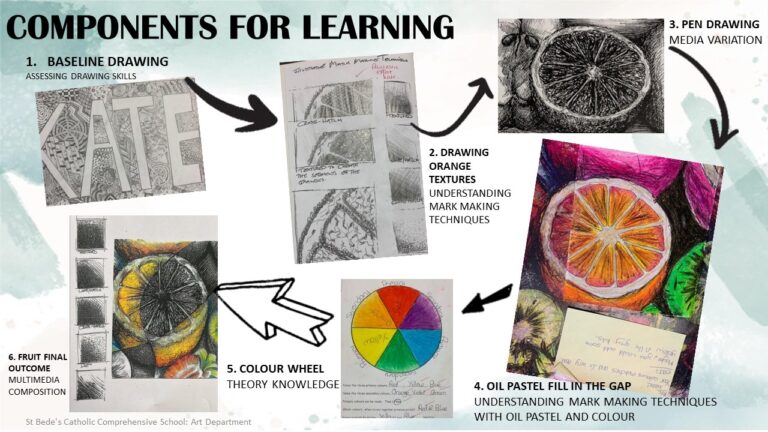
Pop Art 3D Box: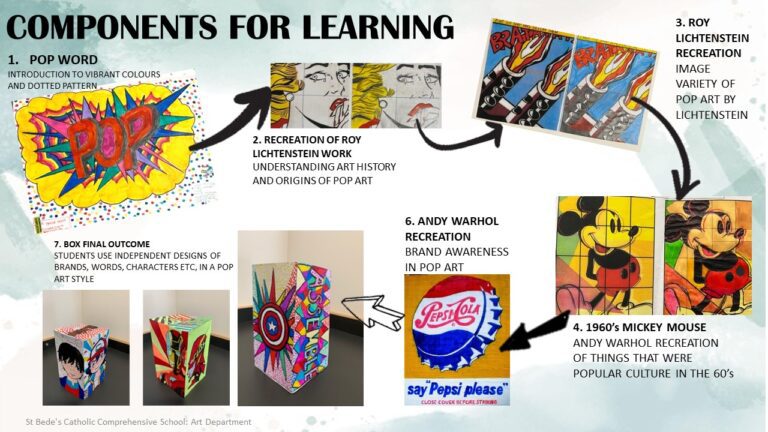
Aboriginal Artefact: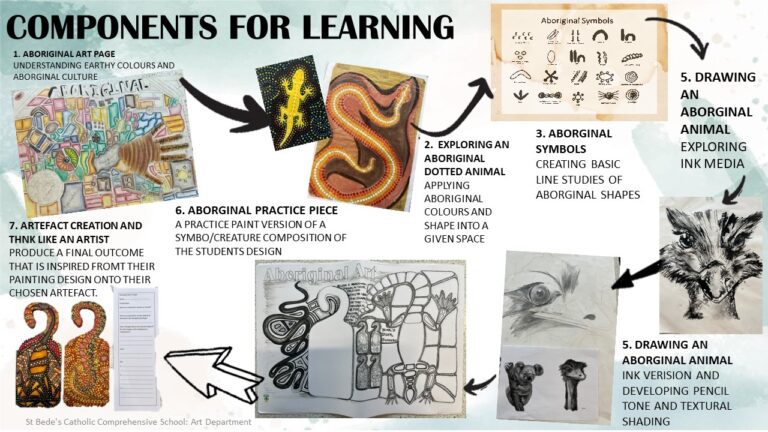
Year 8 Projects
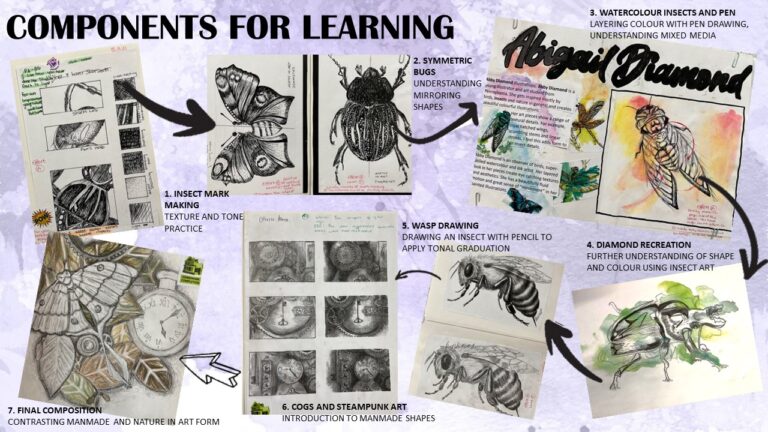
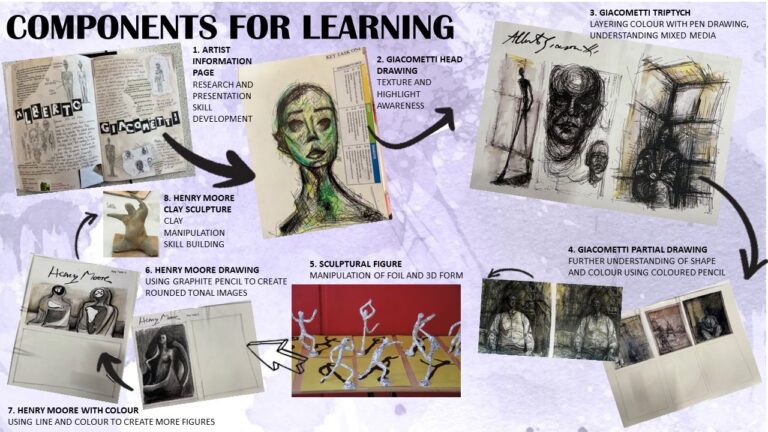
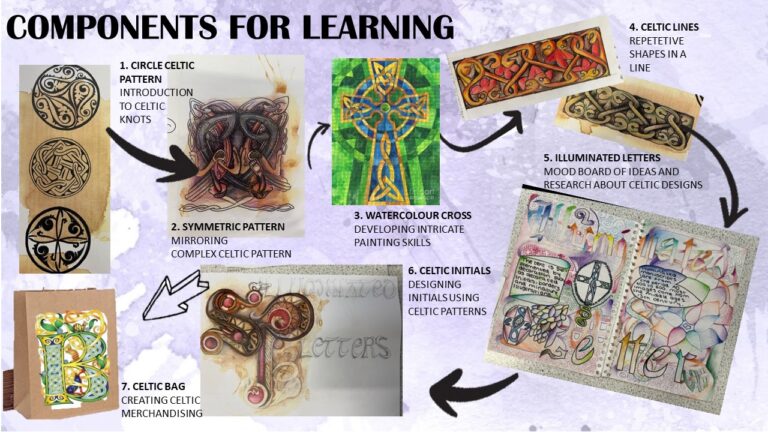
Year 9 Projects
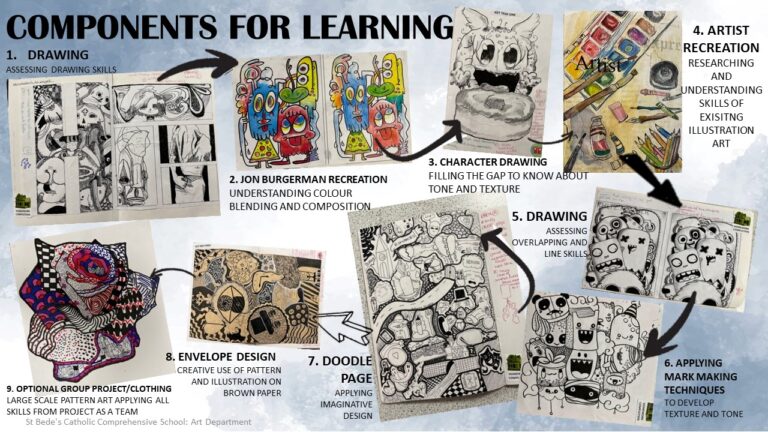
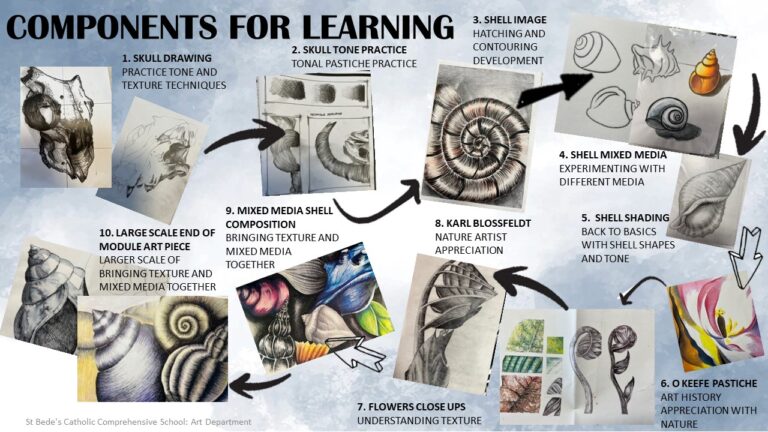
Year 10
Year 11
Year 12
Year 13
-complete artwork to show effective progress and sketchbook cohesion
-promote independent learning
-ensure skills and techniques are practiced at home
-identify misconceptions and targets for studentsGCSE Assessment Objectives
Practical Work
Literacy
Key Stage 5 Assessment Objectives
Progression Map
Intent
Students experience at KS2
Key Concepts

